Eight shafts for the E4 Stockholm bypass
One of Sweden’s biggest infrastructure projects right now is the E4 Stockholm Bypass. Right outside Drottningholm Palace, Bergteamet is working on behalf of Norwegian AF Gruppen on a number of major ventilation shafts for the long road tunnel under Lovön.
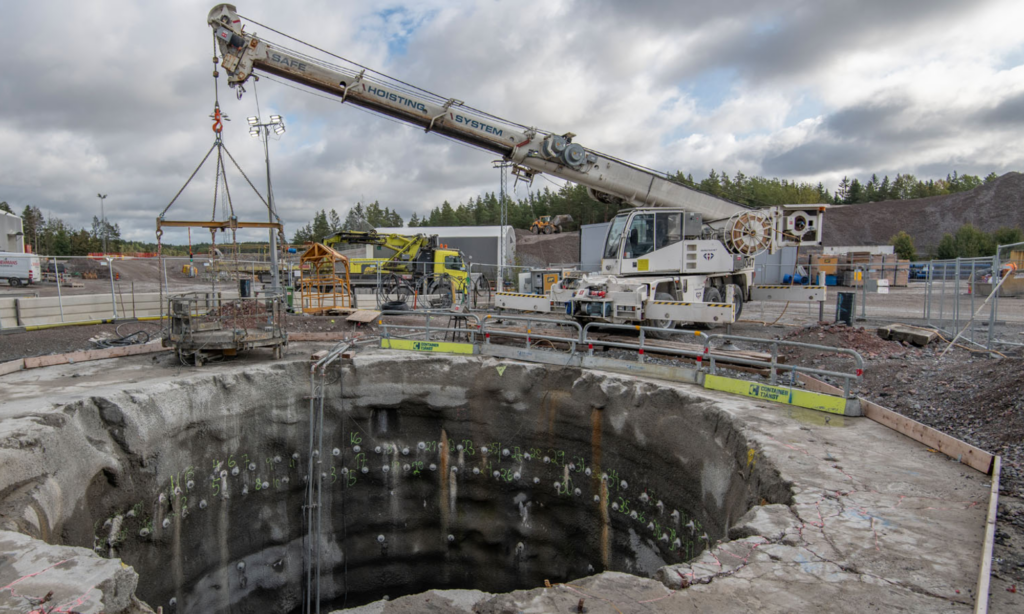
Each shaft is excavated by raise boring a three-metre-wide hole. The shaft is then enlarged to 9.8 meters before being cleaned, scaled, reinforced and sprayed. The work is done in 5-metre stages. Much of the work is done from a platform lowered into the shaft by one of Bergteamet’s mobile shaft elevators.
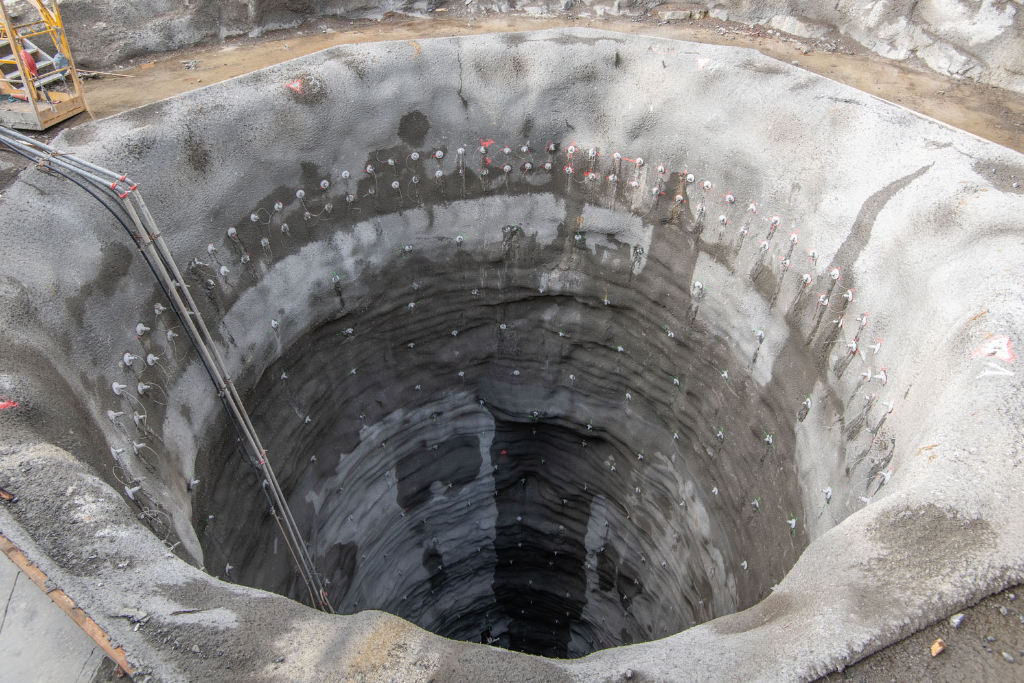
One of the deepest shafts located on northern Lovön is bolted and sprayed with concrete. The northern shafts will be about 100 metres deep and the southern shafts almost 50 metres. The diameter is just under 10 metres.
Bergteamet’s assignment consists of sinking a total of eight shafts, four located on the north side of Lovön near Drottningholm and four on its south side. The north side shafts will be about 100 metres deep, and the south side shafts just under 50 metres. The shafts are just under 10 metres in diameter.
– We began setting up in November 2022, and today production is in full operation. Right now our organisation has almost 50 employees including subcontractors, says Jens Jonsson, Bergteamet’s site manager.
Multiple stages
Each shaft is excavated by raise boring a three-metre-wide hole. The shaft is then enlarged to 9.8 metres before being reinforced and sprayed.
– We work in 5-metre stages. We drill, blast and haul away rock. Then we scale the rock manually and with the aid of a 9-tonne excavator. This is done from a platform lowered into the shaft by one of our mobile hoisting shaft cranes. We also wash each shaft as required by the relevant rock cleaning standard, explains Jens.
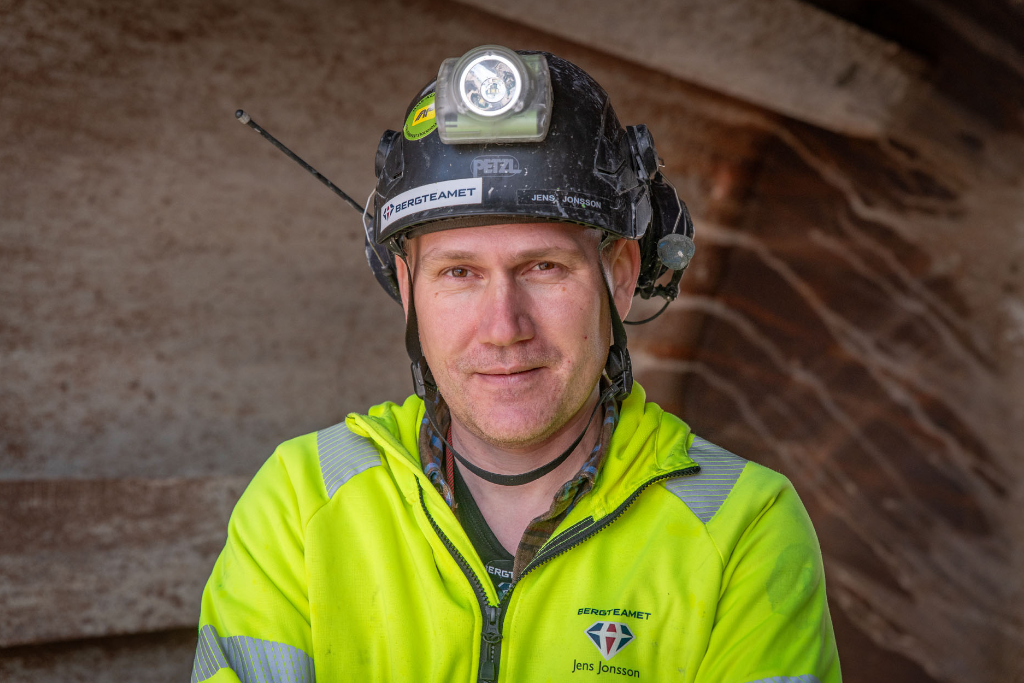
Jens Jonsson, Site Manager, Bergteamet
Facts about the E4 Stockholm Bypass
- The E4 Stockholm Bypass is a new 21-kilometre stretch of the E4. It runs from Kungens Kurva in the south to Häggvik in the north. Major parts of the route consist of tunnels.
- AF Gruppen’s contract, FSE 305, runs from the northern part of Kungshatt under the island of Lovön and to the middle of the Lambarfjärden sound.
- The contract includes the construction of six kilometres of main tunnels, seven kilometres of ramp tunnels and eight shafts.
Scanning and marking
After washing, the shaft is scanned and measured by Bergteamet’s measurement technicians. They also mark the shaft’s levels and compass direction for mapping. Swedish Transport Administration geologists then analyse the rock’s quality and produce reinforcement instructions for Bergteamet to follow.
– Reinforcement is done by manually spraying the shaft with concrete from a shaft platform. This is followed by bolting. So far, we have used 3-metre bolts set at 1.7-meter intervals. According to the specification, we scan and re-tighten a large proportion of the bolts, says Jens.
A tough, challenging winter
The project has been full of challenges, especially since early spring was unusually long and cold.
– All of the work in the shafts takes place in the open. The conditions in the area and the nature of the work do not allow us to make any weatherproof covers for the shafts, says Jens.
– What’s more, because the road here is a simple country road with little load-bearing capacity, all machinery and materials have to be transported in by ferry.
Jens is proud of his team.
– Our personnel have all done a fantastic job. The weather has been tough, and because we’re continually developing our methods, we made an adjustment to our work arrangements early on. Yet despite the conditions, everyone has worked single-mindedly and with a focus on solutions, he emphasises.
Close collaboration yields results
The project is extensive, and collaboration is one of its success factors.
– We enjoy excellent, close collaborations with AF Gruppen and everyone else. We hold daily meetings to coordinate the work between the tunnel and shafts and carry out joint safety rounds every week. We hold construction meetings every fortnight instead of monthly, and up until the summer holidays we shared the same office space, says Jens.
– All this keeps everyone aware of how the project is going and what is happening. And it contributes to a great common understanding.
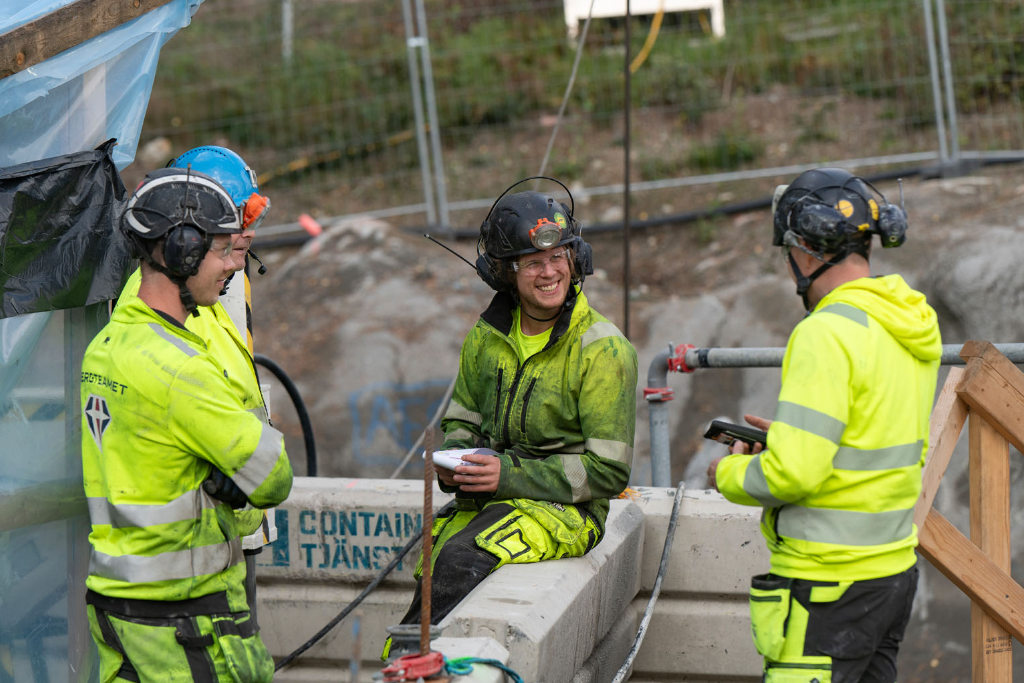
There has been close collaboration between Bergteamet, AF Gruppen and everyone else involved with daily coordination meetings, weekly safety rounds and fortnightly construction meetings.
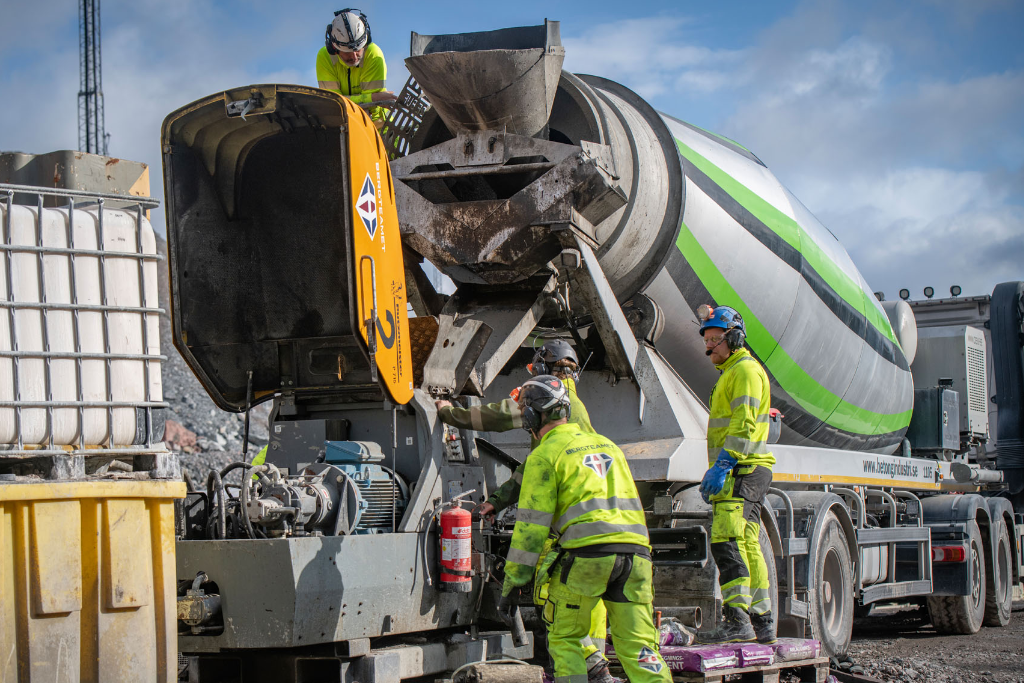
Preparations at a concrete truck before concrete spraying of a shaft. A total of 750 cubic meters of shotcrete are used in the project.
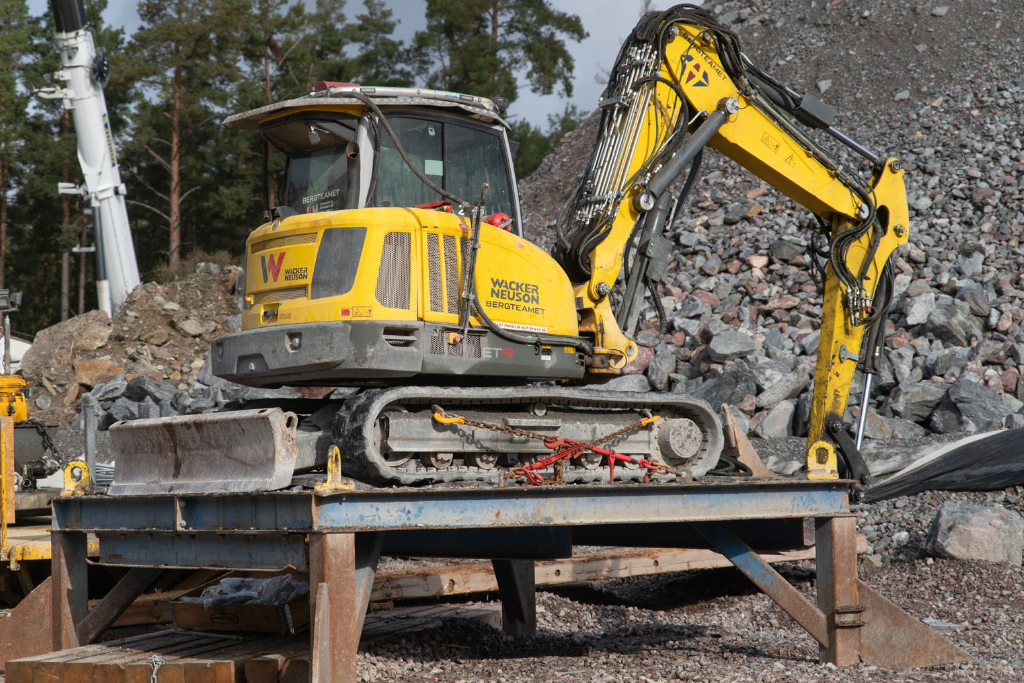
Scaling is done both manually and with the aid of a 9-tonne excavator lowered into the shaft on a platform.
Focus on safety
The project’s size and the Swedish Transport Administration’s role as the client mean that documentation and safety are crucial tasks.
Bergteamet has a dedicated project engineer responsible for all documentation in collaboration with H Safety AB, which provides support on safety and environmental issues.
Jens is keen to emphasise the high level of safety.
– We work with safety first in mind. Our shaft sinking method is approved, we’re permitted to convey people in the shafts, and we use both rescue winches and cranes.
Also, we’ve carried out rescue drills in shafts together with Södertörn’s emergency services, which was greatly appreciated.
Skills in infrastructure
The E4 Stockholm Bypass is by far the largest infrastructure contract Bergteamet has ever had.
– The project is truly significant. It showcases our our expertise in both the mining industry and infrastructure. The E4 Stockholm Bypass provides us with important experience for future infrastructure projects anywhere in Sweden, emphasises Jens.
